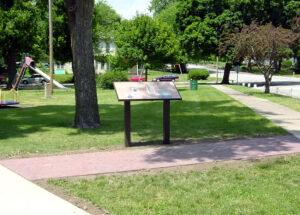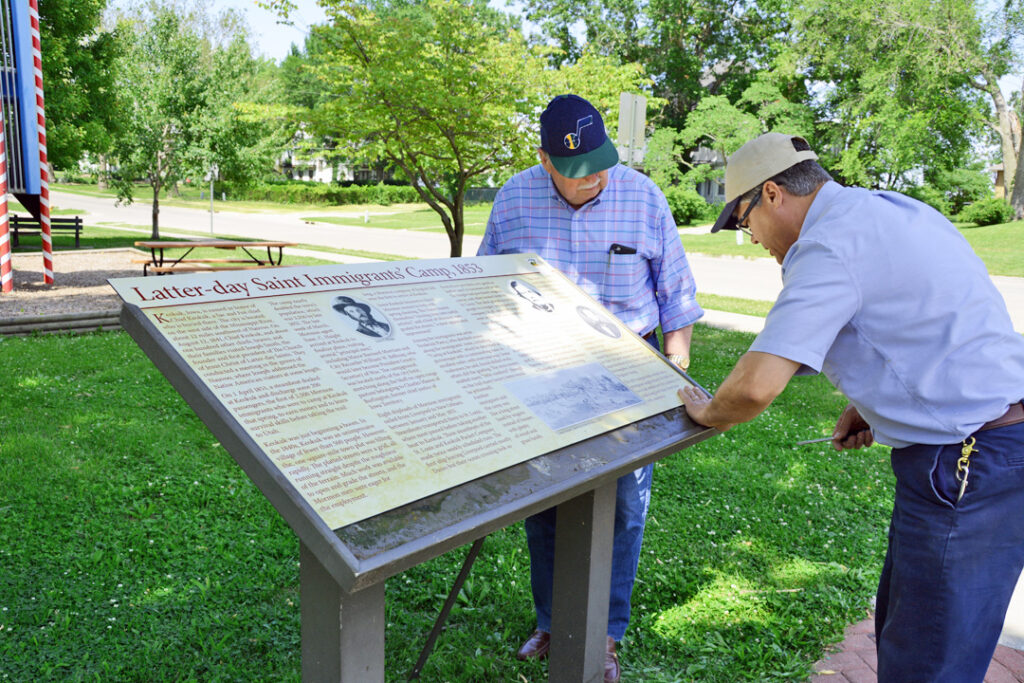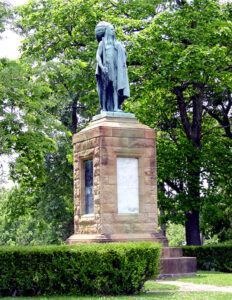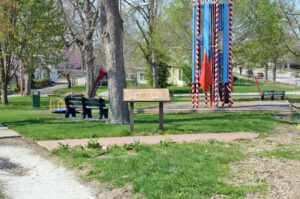Keokuk, Iowa, USA

Keokuk, Iowa is named in honor of Chief Keokuk, a Sac and Fox chief who is buried there. The city is located on the west side of the Mississippi River about 12 miles southwest of Nauvoo.
On August 12, 1841, Chief Keokuk, along with Kiskukosh, Appenoose and about one hundred other chiefs, braves, and their families visited the Prophet Joseph Smith in Nauvoo. They conducted a meeting in the groves where “Joseph addressed the Indians at some length, upon what the Lord had revealed to him concerning their fore-fathers, and recited to them the glorious promises contained in the Book of Mormon respecting themselves, the despised remnants of a once splendid race.”1 Chief Keokuk replied that he had a Book of Mormon and that he considered the Prophet a “great and good man. Keokuk looks rough, but I am a son of the Great Spirit.”2
|
Later in 1853, Keokuk served as a staging area for Eastern and European convert emigrants who were headed west to the Salt Lake Valley. Over 2,500 Saints passed through Keokuk in 1853 on their way to Zion.3
In speaking of the influx of Mormon emigrants, theKeokuk Dispatch, a local newspaper, reported the following:
A large number of Mormons are now employed in grading the streets of our city. Each man is a “full team” behind a pick and shovel. A pile of dirt before a dozen or two of these hard fisted, strong fellows, is “nowhere.” The rough places of our city are rapidly becoming smooth, and if the Mormons appear here awhile longer, our streets will present quite a different appearance from what they have presented heretofore.4
In June 2003, the Latter-day Saints returned to Keokuk on the sesquicentennial anniversary of the establishment of the emigrant camp to honor and pay tribute to these early Saints. They erected a marker at Triangle Park on the corner of 5th & Grant Avenue and like the Saints who passed through Keokuk in 1853, also assisted the city by repairing the curbs and gutters that surrounded the park.
In 2019 the panel at Triangle Park showed the effects of time and weather. It was replaced by a new panel sponsored by the Ensign Peak Foundation.

SOURCES
1 B. H. Roberts, The Rise and Fall of Nauvoo (Salt Lake City: Deseret News, 1900), 106 – 107.
2 Ibid, 107.
3 William G. Hartley, “LDS Emigration in 1853: The Keokuk Encampment and Outfitting Ten Wagon Trains for Utah,” Mormon Historical Studies, (Fall 2003), 43.
4 Quoted in Fred E. Woods & Douglas Atterberg, “The 1853 Mormon Migration through Keokuk,” Mormon Historical Studies, (Fall 2003), 36.
Ownership Status
Triangle Park is situated on a three-way intersection in Keokuk (see directions above). The statue of Chief Keokuk is in nearby Rand Park overlooking the Mississippi River. The address is 1401 Stripe Street in Keokuk. Both sites are free and open to the public from dawn to dusk.
Map & Directions
Admission: Free
Photos


Articles & Resources
William G. Hartley, “LDS Emigration in 1853: The Keokuk Encampment and Outfitting Ten Wagon Trains for Utah,” Mormon Historical Studies, Fall 2003, 43.
Fred E. Woods & Douglas Atterberg, “The 1853 Mormon Migration through Keokuk,” Mormon Historical Studies, Fall 2003, 25.
Fred E. Woods, “From Liverpool to Keokuk: The Mormon Maritime Migration Experience of 1853,” Mormon Historical Studies, Fall 2003, 3.
